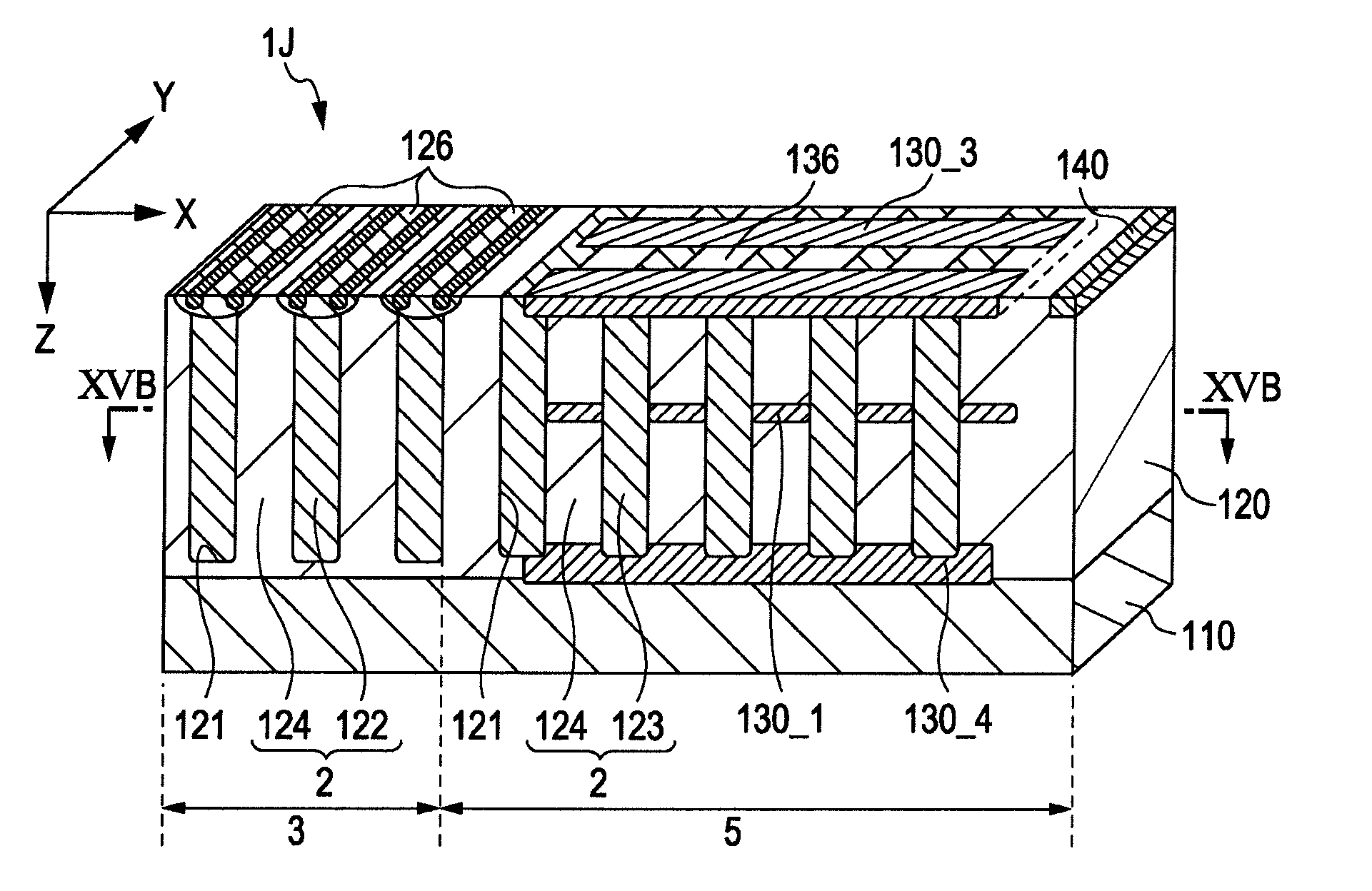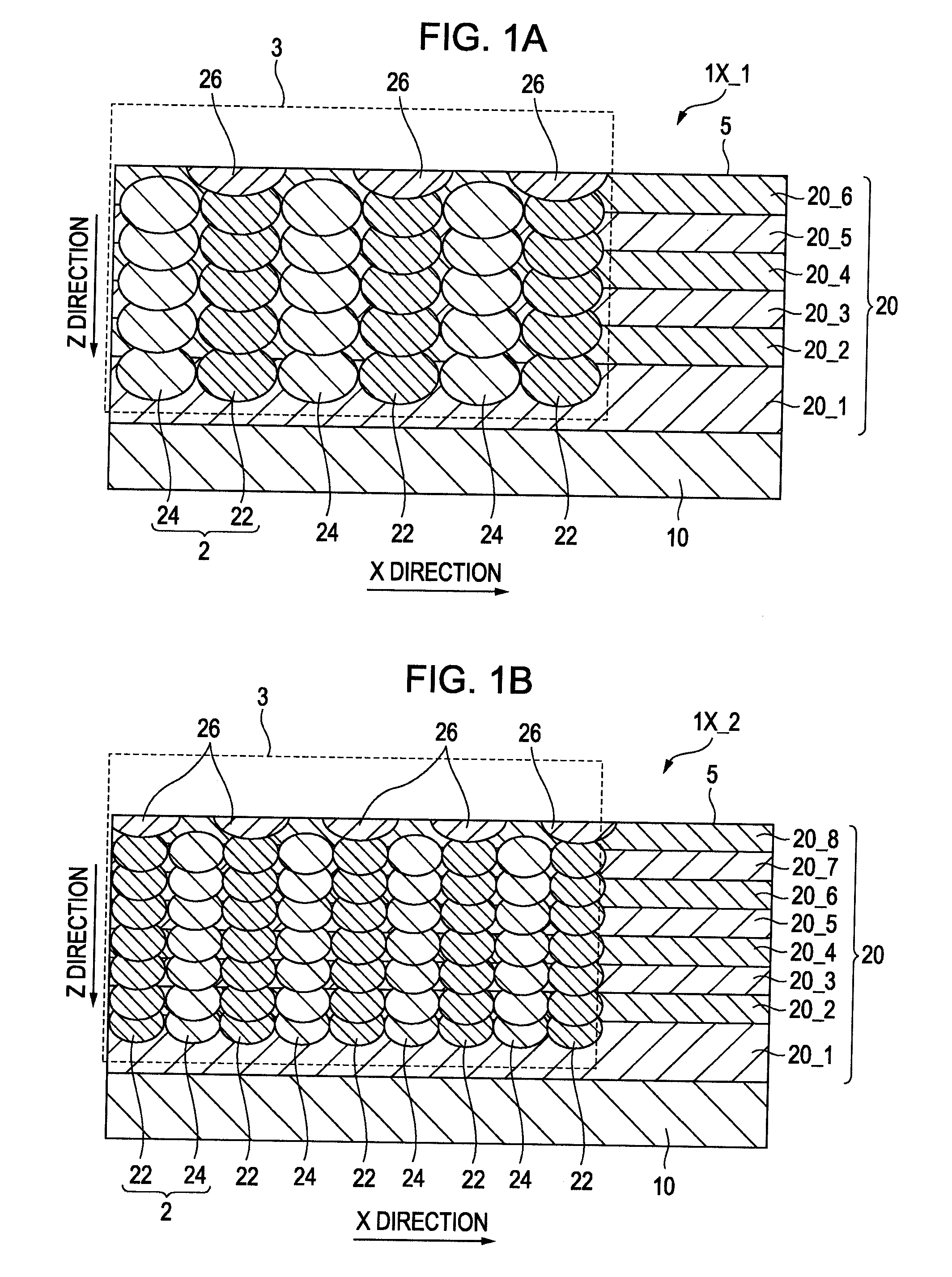Semiconductor device and manufacturing method for the same
a technology of semiconductor devices and manufacturing methods, applied in the direction of semiconductor devices, basic electric elements, electrical appliances, etc., can solve the problems of no established system and system for obtaining appropriate terminal parts, and achieve the effect of increasing breakdown voltage, high stable breakdown voltage, and simplifying the process design of super junction structures
- Summary
- Abstract
- Description
- Claims
- Application Information
AI Technical Summary
Benefits of technology
Problems solved by technology
Method used
Image
Examples
first embodiment
on
[0106]FIG. 2A to FIG. 2E illustrate the configuration of a semiconductor device 1A_1 according to a first embodiment (basic configuration) of the present invention. Here, FIG. 2A is a perspective diagram schematically illustrating the configuration of almost the half part of the semiconductor device 1A_1. FIG. 2B and FIG. 2C are schematic diagrams illustrating the configuration of the boundary between an element part 3 and a terminal part 5 of the semiconductor device 1A_1, where FIG. 2B is a schematic perspective view of the semiconductor device 1A_1 and FIG. 2C is a cross-sectional view of the semiconductor device 1A_1 along the IIC-IIC line in X-Y directions in FIG. 2B. FIG. 2D is a plan view (transparent view) of the semiconductor device 1A_1 with reference to the X-Y plane in FIG. 2B and the X-Y plane in FIG. 2C. In this figure, a source region is omitted, while both a base region and a gate electrode are illustrated. Any of these diagrams is only provided for diagrammatic il...
first modified example
Manufacturing Method: First Embodiment: First Modified Example
[0159]FIG. 5A and FIG. 5B illustrate an exemplary process for manufacturing the semiconductor device 1A_2 having the basic configuration according to the first embodiment (first modified example). The following description will focus on the difference with the manufacturing method of the semiconductor device 1A_1 according to the first embodiment (basic configuration).
[0160]A trench-formation epitaxial-refilling method (the third manufacturing method) is applied to the formation of p-type epitaxial buried layers 122 and 123. At this time, however, the process may be performed in consideration of forming a p-type lateral RESURF region 130 on the middle portion of the n-type epitaxial layer 120 in the terminal part 5 to prevent from overlapping with the p-type epitaxial buried layer 123. For example, the process includes the steps of forming a first n-type epitaxial layer 120_1, forming a p-type lateral RESURF region 130, f...
second modified example
Manufacturing Method: First Embodiment: Second Modified Example
[0173]FIG. 7 illustrates an exemplary process for manufacturing the semiconductor device 1A_3 having the basic configuration according to the first embodiment (second modified example). The following description will focus on the difference with the manufacturing method of the semiconductor device 1A_2 according to the first embodiment (second modified example).
[0174]In principle, like the first embodiment (first modified example), the formation of trench grooves and the embedding growth may be carried out only once. At this time, however, the process may be performed in consideration of patterning an opening 132 to prevent the generation of overlap with the p-type epitaxial buried layer 123 at the time of forming the p-type lateral RESURF region 130 on the middle portion of the n-type epitaxial layer 120 in the terminal part 5.
[0175]First, an n-type epitaxial layer 120_1 is formed up to one half of the desired film thic...
PUM
 Login to View More
Login to View More Abstract
Description
Claims
Application Information
 Login to View More
Login to View More - R&D
- Intellectual Property
- Life Sciences
- Materials
- Tech Scout
- Unparalleled Data Quality
- Higher Quality Content
- 60% Fewer Hallucinations
Browse by: Latest US Patents, China's latest patents, Technical Efficacy Thesaurus, Application Domain, Technology Topic, Popular Technical Reports.
© 2025 PatSnap. All rights reserved.Legal|Privacy policy|Modern Slavery Act Transparency Statement|Sitemap|About US| Contact US: help@patsnap.com



